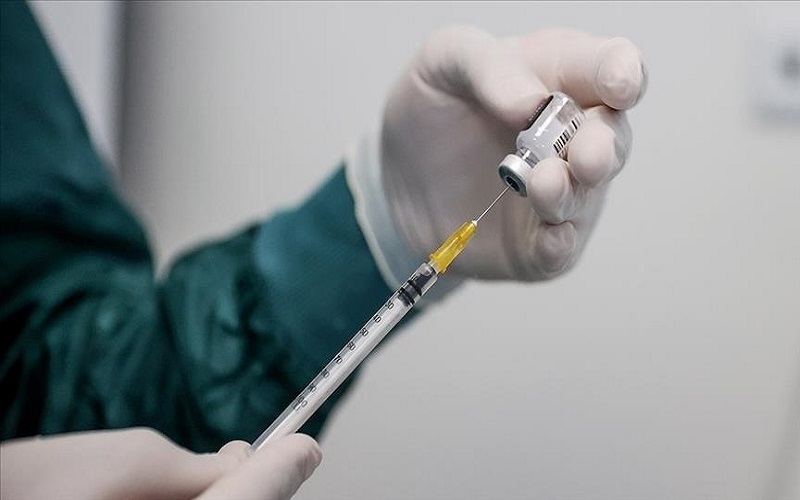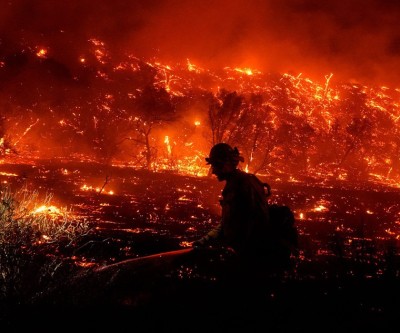Latest News
- Four years after Indigenous woman dies in Niagara Hospital, family still waiting for coroner's investigation
- Lawyer: British Columbia RCMP officer should be fired or resign immediately
- B.C. government looks to offer loan guarantees to property owners in Cowichan Aboriginal title area
- Uber driver's account in Toronto suddenly deactivated; only source of income cut off after 'duplicate account' claim
- TDSB education chief fired by provincial supervisor; sweeping changes at Canada's largest education board
Latest Ads
-
Jasmine Jewel
Call
-
Omidan group
Call
-
Amir Madanpour
Call
-
Dimo studio
Call
-
Yorkacademy
Call
-
Maryambagheri
Call
-
Shishlix Restaurant
Call

Health experts advise: Inject flu and COVID-19 vaccines at the same time
As the autumn season approaches, health experts have given approval for Canadians to receive vaccinations for both influenza and COVID-19 simultaneously, as it can provide an additional layer of defense against respiratory illnesses.
Although updated influenza and COVID-19 vaccines are not currently available, experts predict that they will gradually become available from mid-October, depending on the province or region.
While these vaccines will become a reality in the future, experts have recognized that many Canadians may still be hesitant about receiving both vaccines concurrently.
Dr. Brian Conway, Medical Director of the Vancouver Infectious Diseases Centre, stated, "I think people, in general, are vaccine fatigued - especially with the COVID vaccine. But in mid-October, when we kick off public health campaigns for vaccination, we want people to remember to get both the COVID and influenza vaccines."
He added, "If we let our guard down and vaccination rates for COVID and influenza remain low, it will lead to increased disease transmission and put additional strain on the healthcare system."
What happens when you receive both influenza and COVID-19 vaccines simultaneously?
The National Advisory Committee on Immunization (NACI) has stated that anyone over six months of age can receive both influenza and COVID-19 vaccines in a single session.
The decision to administer both vaccines concurrently is "patient-based," explained Dr. Zain Chagla, an infectious disease physician and associate professor at McMaster University in Hamilton, Ontario.
However, he assured that receiving both vaccines at once is entirely safe and effective.
"Yes, you can get them together. We have data on concurrent administration of influenza and COVID vaccines that show full safety and no decrease in vaccine effectiveness," he said.
Chagla noted that one possible side effect after receiving both vaccines simultaneously is temporary arm soreness that typically lasts for one or two days.
A study by the Centers for Disease Control and Prevention (CDC) in the United States in July 2022 found no safety issues with concurrent administration of both vaccines.
Nevertheless, the report indicated that individuals who received both the influenza vaccine and the mRNA COVID-19 vaccine concurrently were slightly more likely (8 to 11 percent) to experience reactions such as fatigue, headache, and increased muscle pain compared to those who received only the mRNA COVID-19 vaccine. However, these reactions were mostly mild and quickly resolved.
Chagla emphasized that simultaneous vaccination with both vaccines has other advantages, especially for individuals who may not have the opportunity to schedule two separate visits.
"I think it also presents an opportunity for individuals and providers to have conversations about vaccinations. If someone, for example, is willing to get the COVID-19 vaccine, their provider can ask, 'Is your influenza vaccine up to date?'" he added.
Where can you get both vaccines?
It is possible that family physician offices may only have the influenza vaccine, but Dr. Conway stated that he is "very hopeful that COVID vaccine availability to the general population will be broader, as it makes public health sense."
However, he noted that pharmacies "anyway" have access to both vaccines and are currently establishing the necessary infrastructure to administer both.
"I would recommend to all healthcare providers to think about concurrent vaccination for COVID and influenza and take the necessary steps to make both vaccines available," he added.
What will this year's influenza vaccine be like?
Chagla explained that Canada uses data from the Southern Hemisphere, especially Australia, to predict the influenza season's framework.
"This year's data from Australia appears to be a bit more reassuring, showing that respiratory illnesses that lead to flu-like symptoms are slightly below or at similar levels to the years before the COVID pandemic," he said.
He added, "The rapid ascent early on and then the decrease, which happened slightly earlier than expected," he noted that this may have occurred in Canada's influenza season but doesn't require precise prediction.
Using this data, scientists combine influenza vaccines with strains that offer enhanced protection, typically including a quadrivalent vaccine designed to protect against four different influenza viruses, including two influenza A viruses and two influenza B viruses.
"When we look at influenza A, which is the most important and is active early in the season, about 83 percent of circulating influenza strains in Australia are similar to the vaccine," he said. "And for influenza B, which comes towards the end of the season, about 99 percent is similar to the vaccine."
Dr. Jesse Papenburg, a pediatric infectious diseases specialist at the Montreal Children's Hospital, believes that this year's influenza vaccine will be effective.
He said, "Recent data from the Southern Hemisphere, which was recently published, suggests that people who received the vaccine had about a 50 percent reduction in hospitalization compared to those who didn't."
He added, "The best way to protect families from influenza, especially if children are at higher risk due to their age or underlying medical conditions, is to get vaccinated."
Papenburg also encourages getting the COVID vaccine along with the influenza vaccine if possible, stating that it "hopefully helps families because it has been shown that concurrent administration of both vaccines is not only safe but also effective."
When will influenza and COVID-19 vaccines be released?
The exact timing varies and depends on provinces and regions, but influenza and COVID-19 vaccines are likely to become available in
most parts of the country from mid-October.
Some provinces and regions, including Ontario, Saskatchewan, and the northern territories, will initially vaccinate high-risk populations, such as seniors living in long-term care homes and congregate living settings, and then make COVID and influenza vaccines available to the general public.
"It usually happens right after Thanksgiving," Chagla said. "And it's to ensure protection over the flu season, not just during that initial time but even into the spring and summer."
Source
Suggested Content
Latest Blog
Login first to rate.
Express your opinion
Login first to submit a comment.
No comments yet.


































